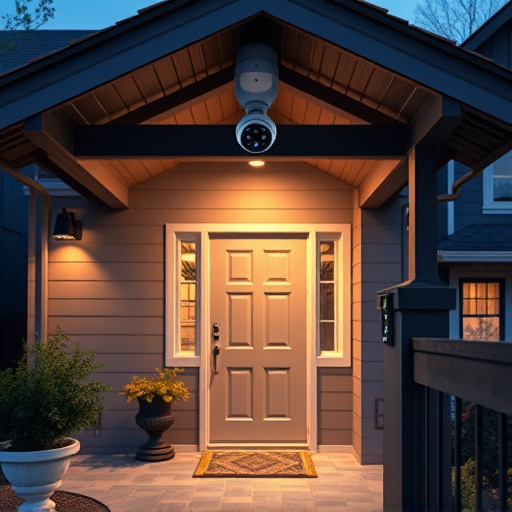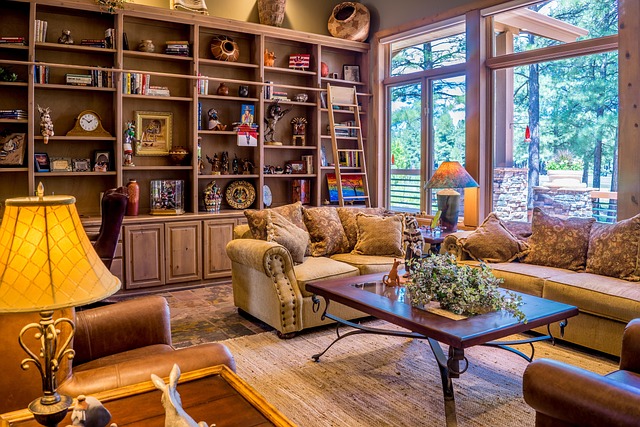Smart home devices significantly enhance personal security through motion sensors, smart cameras, and door/window sensors. Identify specific needs, prioritize areas, and integrate customizable devices into a unified system for control. Regular updates and firmware adjustments strengthen the system. Integrate with existing security measures like alarms and access controls for seamless monitoring via smartphone or voice assistant. Update device firmware, enable encryption, and review app permissions to maintain enhanced personal security.
“Uncover the power of smart home devices for elevated safety with our comprehensive beginner’s guide. Learn how these innovative technologies can transform your living space into a secure haven. From understanding core safety features to integrating them with existing measures, we provide expert advice on choosing and setting up the right devices. Discover best practices for enhanced personal security in today’s digital age. Master these steps, and take control of your home’s safety.”
- Understanding Smart Home Safety Features
- Choosing Devices for Your Security Needs
- Setting Up and Configuring Security Systems
- Integrating Smart Home with Existing Security Measures
- Best Practices for Enhanced Personal Security
Understanding Smart Home Safety Features

Smart home devices offer a range of safety features designed to enhance personal security. These include motion sensors that detect unusual activity, smart cameras with night vision and two-way audio, and door/window sensors that alert you when they’re opened or closed unexpectedly. Understanding how these features work and how to integrate them into your daily routine is key to maximizing their benefits.
By leveraging smart home technology, you can create a safe and secure environment tailored to your needs. For instance, setting up automatic alerts on your phone when motion is detected in specific areas of your home allows you to respond promptly to potential threats. Additionally, integrating these devices with a centralized security system provides an extra layer of protection, giving you peace of mind knowing that your home is always watched.
Choosing Devices for Your Security Needs

When setting up a smart home security system, understanding your specific needs is key. Start by evaluating what areas of your home require the most attention and what risks you want to mitigate. For enhanced personal security, consider devices like door and window sensors for monitoring entries, motion detectors for broader area protection, and smart cameras with night vision for round-the-clock surveillance.
Look for devices that offer customization options to tailor their behavior to your routines and preferences. Integrating these components into a unified system allows you to manage everything from a central hub or through a user-friendly app on your smartphone, ensuring convenient control and peace of mind.
Setting Up and Configuring Security Systems

Setting up and configuring security systems is a crucial step in enhancing your personal security within your smart home environment. It involves installing and integrating various devices, such as cameras, motion sensors, and alarms, to create an interconnected network that monitors and protects your property. Begin by assessing your needs and selecting compatible equipment. Many modern security systems offer user-friendly apps that guide you through the installation process, ensuring each device is correctly positioned for optimal coverage.
Configure settings to tailor the system to your lifestyle. Adjust sensitivity levels, set schedules for automated routines, and define zones within your home to receive alerts when specific areas are triggered. Regularly update firmware and software to benefit from improved features and security patches, enhancing the overall effectiveness of your smart home security setup.
Integrating Smart Home with Existing Security Measures

Integrating smart home devices with your existing security measures can significantly boost your enhanced personal security. Start by evaluating your current setup, including alarms, cameras, and access control systems. Smart home technology can complement these by providing real-time alerts and remote monitoring capabilities via your smartphone or voice assistant. For instance, smart locks can notify you when someone enters your home, while motion sensors can detect unusual activity.
Ensure seamless communication between these devices and your security system. Many modern smart homes use Wi-Fi, Bluetooth, or Zigbee protocols to connect devices. Compatibility with your existing security system is crucial for a comprehensive approach to enhanced personal security. Regularly update firmware and explore automation rules to create a cohesive network that keeps you informed and safe.
Best Practices for Enhanced Personal Security

To boost your enhanced personal security with smart home devices, start by integrating a robust surveillance system. Security cameras equipped with motion sensors and night vision can deter intruders and provide real-time alerts via your smartphone. Always keep firmware updated to patch security vulnerabilities.
Additionally, prioritize privacy settings. Enable encryption for all connected devices and use strong passwords or biometric authentication. Be mindful of the apps accessing your smart home system and regularly review permissions. These best practices will ensure your smart home contributes to a safer, more secure living environment.
Smart home devices offer a powerful way to enhance your personal security, providing peace of mind and advanced protection. By understanding the various safety features, selecting the right devices, and implementing best practices, beginners can transform their homes into secure, interconnected environments. With expert guidance, setting up and configuring these systems is accessible to all, allowing folks to take control of their safety without compromising comfort or privacy. Embrace the future of security and unlock the potential of a smarter, safer home.






